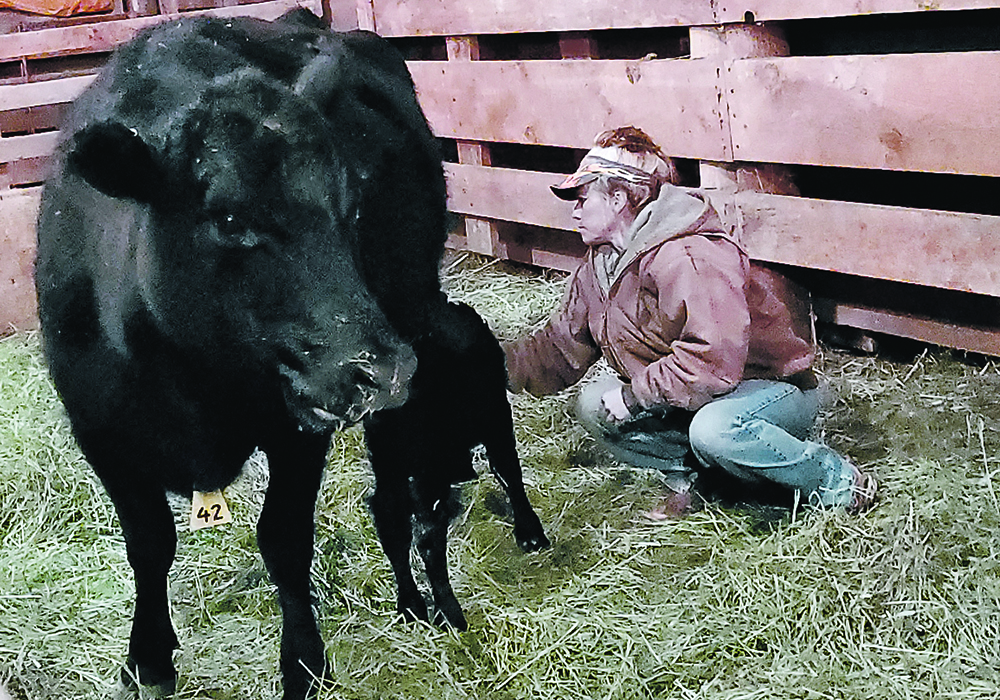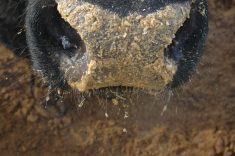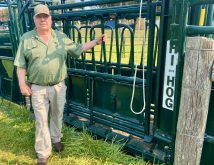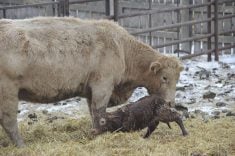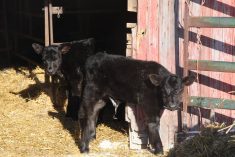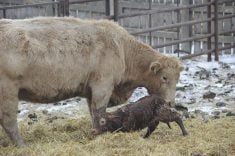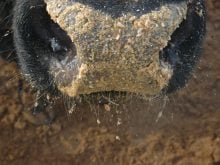Rising oxytocin levels trigger maternal behavior but a deficiency, particularly in first-time heifers, can cause problems
Most cows immediately care for and protect their newborn calves but some will be slow to mother, not by choice, but due to an imbalance or deficiency of hormones that trigger maternal behaviour.
The bonding process of cow and calf is a complex blend of hormonal-induced and learned behaviour, the latter being the reason mature cows are usually quicker to mother their offspring than first-time heifers.
“If experience was the only factor, every cow would want to adopt another calf as soon as you wean hers. A cow is most receptive to mothering a calf when she gives birth,” says Dr. Joseph Stookey, retired professor from the Western College of Veterinary Medicine.
Hormones trigger and drive most maternal behaviour.
“Some cows become ‘programmed’ a few days before they calve and become interested in any newborn. Their hormones are already reaching a level that makes them receptive to any new calf, even if it’s not theirs,” Stookey says.
“At the other end extreme are cows that don’t have proper hormone profile or levels, and they don’t want their calf. This occurs most often in first-calf heifers, or in some of the females we assist or deliver by C-section.
“If we ran the cow around to get her into the corral for assistance, or she suffers too much trauma during birth, she may be less interested in her newborn. There may be other hormones overriding the natural sequence because of stress or pain.”
The birth process is triggered by changes in progesterone and estrogen levels, but rising oxytocin levels trigger maternal behaviour. Oxytocin is released in the brain during birth, especially as the cervix dilates.
“Its presence in the olfactory bulb of the brain helps explain the role of smell and importance of odour in the bonding process. The cow recognizes her calf by smell and can always pick her calf out of a group,” Stookey says
Stretching and stimulation of the cervix and birth canal as the fetus pushes against it with each contraction, and passage of the fetus through the cervix, are the main triggers for oxytocin release.
“If we do a C-section, there isn’t much cervical stimulation since the fetus doesn’t have to come through it. Analgesic drugs used during a C-section to block pain can also interfere with oxytocin release,” says Stookey.
Heifers produce less oxytocin than cows that have had previous calves. This may be why heifers are more apt to reject their calves.
Some heifers are indifferent but become more motherly within 12 to 24 hours. In some instances, a heifer may not have much milk but when milk starts to come in, she becomes more interested in the calf. Oxytocin is associated with milk letdown and is also closely tied to maternal behaviour.
“If you can stimulate milk let-down a few times by assisting nursing, the hormone comes on board and improves maternal behaviour,” Stookey says. “Oxytocin can switch off a heifer’s aggression, reluctance or fear, and turn it into interest and mothering.”
Females also react to sensory stimuli provided by the calf and birth fluids.
“Any movement of the calf is strong stimulus to the cow to get up and turn around to smell the calf and start licking it. Vigorous calves that shake their heads elicit a stronger response in the cow. She is more attracted to a wiggling calf than a weak or dead calf,” says Stookey.
“In one study, we monitored 200-plus cows and heifers that required veterinary assistance (C-section or pull) and saw significantly higher percentage of weak calves being rejected.
“The smell and taste of birth fluids is another strong attractant that stimulates the cow to lick the calf. If the mothering process is interrupted before the cow licks the calf, the likelihood for rejection increases,” he says.
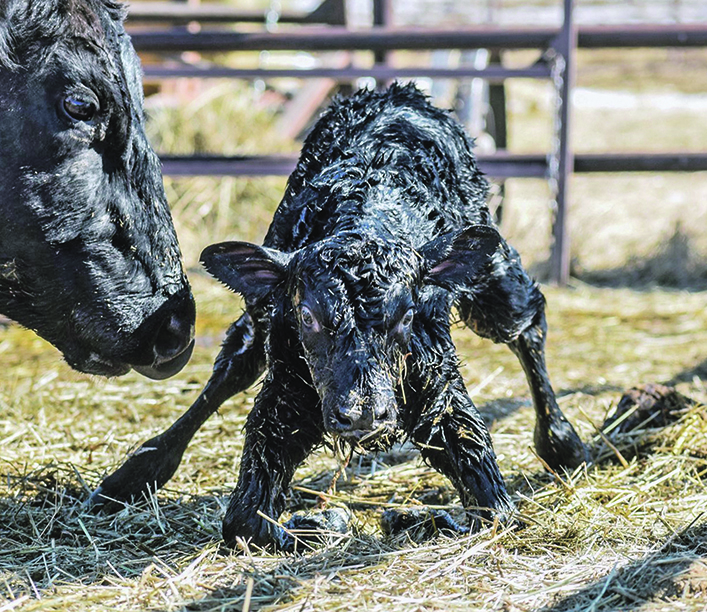
Smearing birth fluids on a cow’s muzzle and tongue after delivery can jump-start maternal response. Pouring feed onto a newborn calf can also entice some reluctant mothers to approach the calf and contact birth fluids as they eat the feed.
Cattle instinctively seek a secluded place to calve where the bonding process won’t be interrupted or another cow might try to claim the calf. Quietly moving each calving female to a private place to calve can prevent mothering problems.
That move should be done before calving so bonding is not interrupted, especially in the case of heifers.
Older cows are likely to follow the calf if moved later but heifers can be confused, especially if they haven’t had time to lick and bond with the calf.
“You can’t just take the calf in the house to warm up, then put the calf and heifer in the barn and expect her to mother it. She’s more apt to accept the calf if you take it back to the birth site.
“If you grabbed the calf before the cow or heifer accomplished that recognition/bonding, she may not recognize the calf in the barn as hers. She wants to go back to the spot where she gave birth, to find her calf,” says Stookey.
“If you have to pull a calf out in the field and the cow jumps up and runs off, don’t just take the calf to the barn and then try to get the cow in. That doesn’t work. You have to make sure the cow has a chance to smell that calf or she won’t recognize it as hers after you get her to the barn.
“If you need to move a calf from the birth site, make sure the cow follows the calf. Also do not totally dry a newborn because the birth fluids are a strong stimulus in eliciting maternal behaviour.



